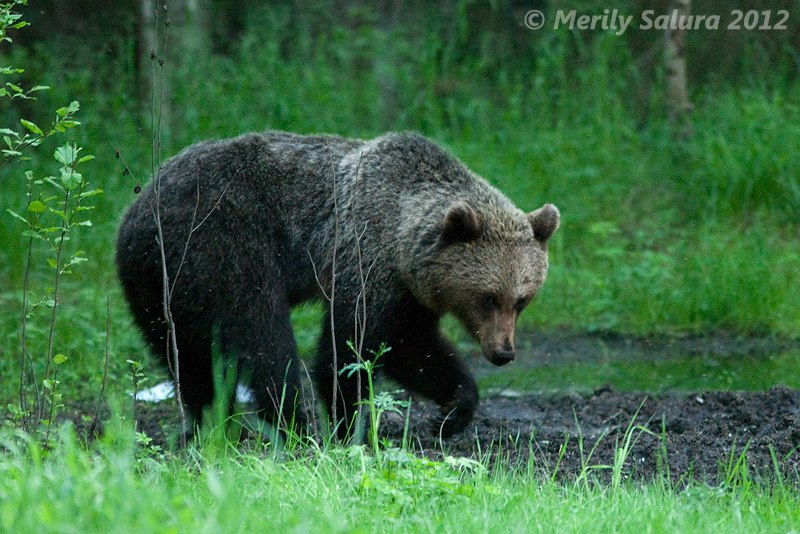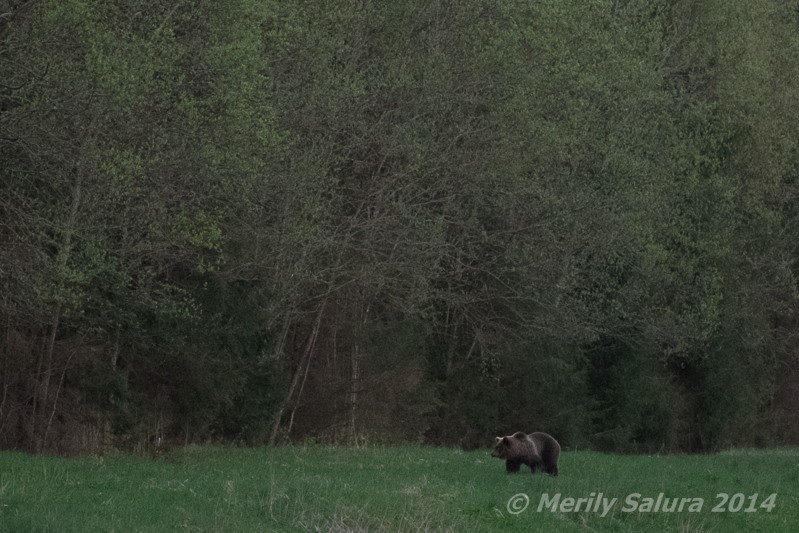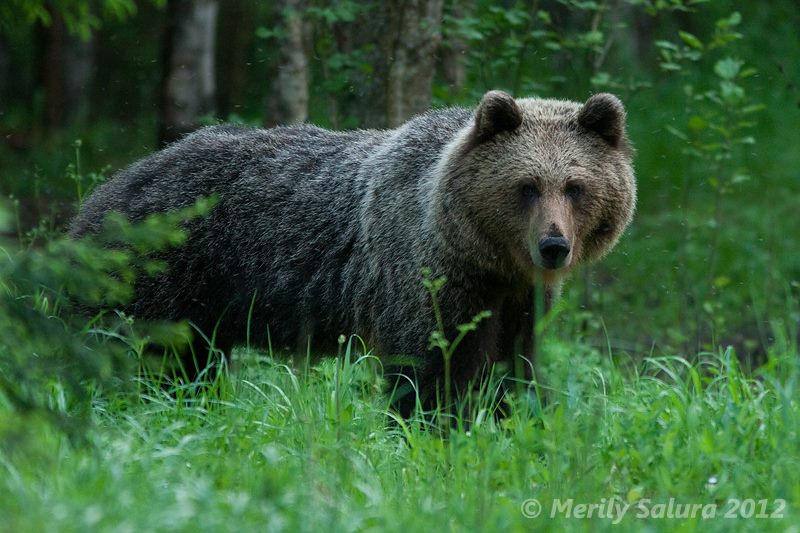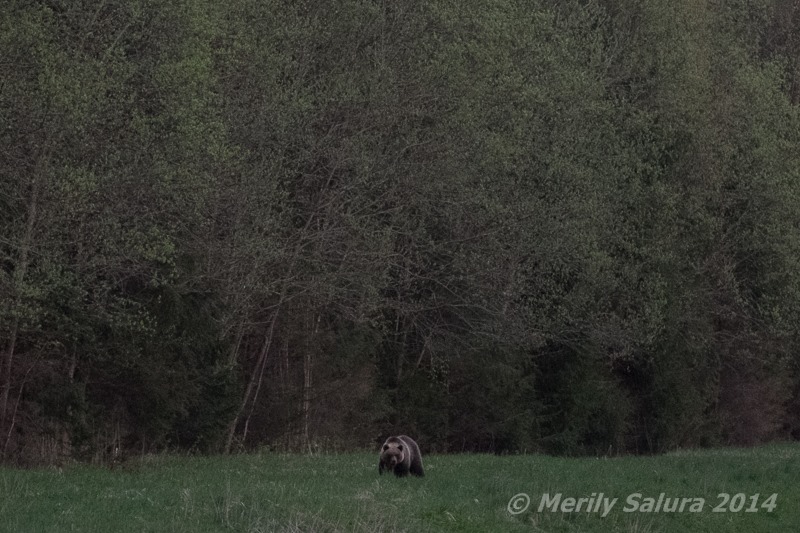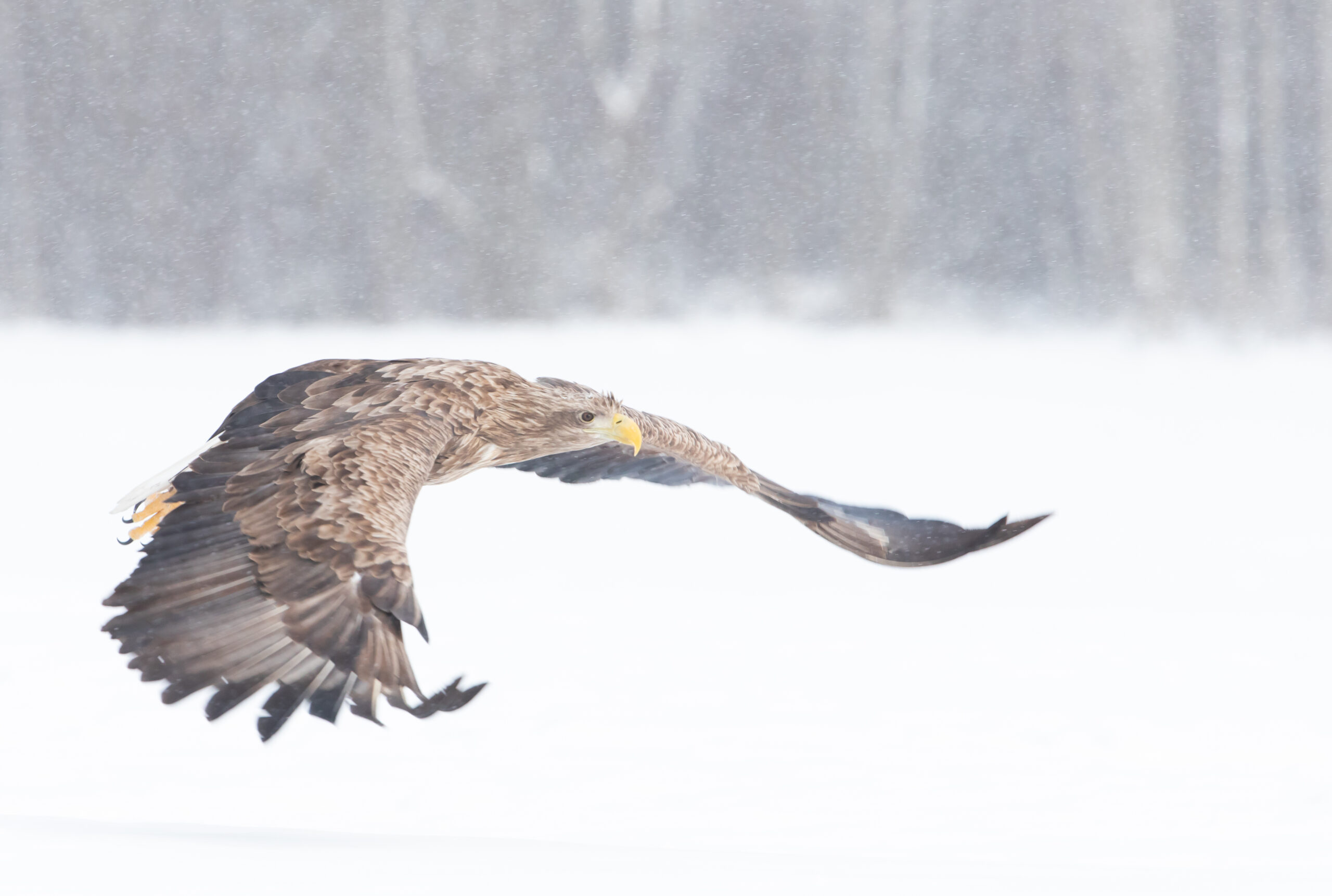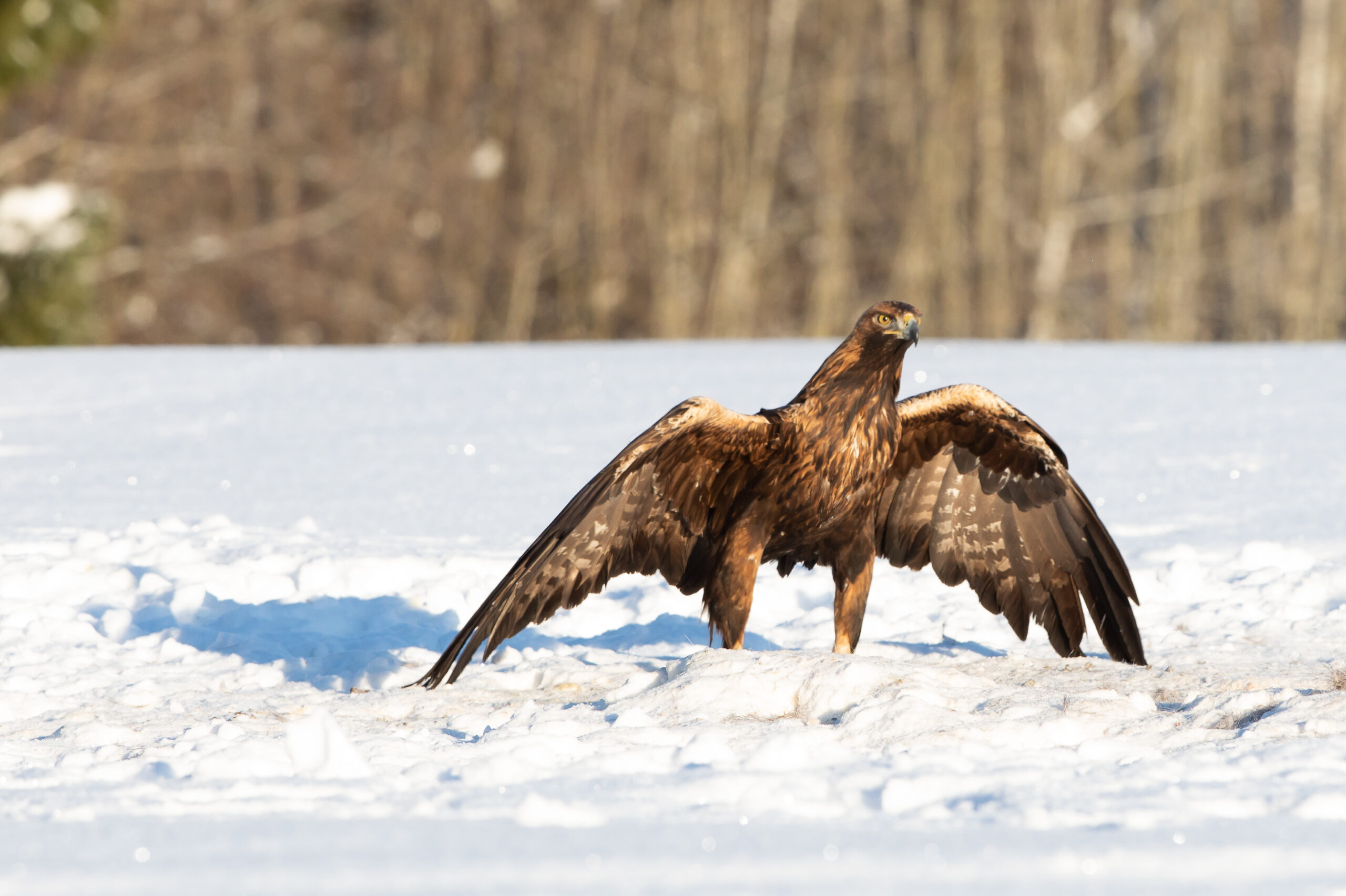“A curious bear scared a berrypicker”, “A curious bear emptied the alveary”, the Estonian newspapers report now and then. Why on Earth do we say “curious like a cat”? It is clearly – curious like a bear! If, regarding media coverage of bear-doings, this is not enough, we also have the Ruhnu bear – a bear that got to an Estonian island called Ruhnu by floating on an ice floe in April 2006. Bears and their doings are often newsworthy. Bears have received a special kind of attention in our culture already for a long time. Of course, this attention was much different from what it is today. In finno-ugric cultures, bear has been a sacred animal. Its name was a taboo.
Yet, as curious and adventurous as bears may be, they are also very cautious. This is why spotting a bear was the last thing on our mind as we walked towards a tiny jerry-built hide in the woods in June 2012. The cuckoo was calling, and so we joked: “Should the cuckoo call out 20 times, we will probably see an animal today!” The cuckoo called out 11 times, and then… a wild boar, not very far. I looked closer, and admitted my mistake: this is a bear instead! It took one step further and stopped. We shared a long glance, an eye-contact. Then the animal moved on, sniffed the air and the ground, and stepped out of my sight again. Its pace was slow, and on the moment he left, the impression left behind was that of pride and majesty. This was the moment when my hands started to shake. If you happen to be an adrenaline junkie, brown bear photography is something for you.
According to the latest data available, there are approximately 700 bears in Estonia. A hundred years ago, however, only 30 bears could be found. European brown bear, the only subspecies of bear that can be found in Estonia, is the one with the biggest habitat and loves coniferous, mixed and mountain forests, better still if there happen to be bogs and blowdown in the forest. In areas with a tougher climate – like here – their year contains a period of hibernation, so there is no hope of spotting a bear from November to March or April.
For those who are interested in brown bear photography, it is important to know – there is the greatest probability of spotting a bear at dusk, not so much in daylight. When twilight approaches, bears start to move around more. Although, cases such as that of a curious bear stepping out of the forest to watch the shooting competition in a firing range in broad daylight have occurred and still linger in the memory of our local hunters. Beekeepers cannot forget the bears, either. A woman at the countryside in Harju county had especially angry kind of bees whon the neighbors described as “extraordinarily ferocious fellows”. I emphasize – “had”. Until the bear came.
On one late evening in May, I was watching the bank of a canal with feelings of thrill and excitement. It was already quite crepuscular; I had a feeling in my heart that I might encounter animals this time. And this time, this feeling did not let me down. A dark spot, darker than all the surroundings, was in sight straight ahead. One photo, a little bit of zooming – and the frissons hit me. It became clear as day that my path has, again, crossed that of a bear. A beautiful one! As it is May, an interesting fact comes to mind: brown bears’ mating period lasts approximately 4 months, i.e. from April to July. The cubs are born in January, during the hibernation. And they could live up to 50 years of age.
I wish you good luck and – do not forget – you might think that bear is a clumsy animal who makes much noise moving. Aha! So it is not! We should also say “quiet as bear”.
PS When you see a moose carcass in the woods, moderately smelly, do not panic. The bear is just cooking, letting the meat age a bit. It is not ready yet – it takes a while till it is the way the bear likes it.

